Disclosure: This article contains affiliate links. We may earn a commission from purchases at no extra cost to you, which helps our travel content.
The first light of dawn breaks over Mekelle's rugged landscape, painting the sandstone cliffs in hues of amber and gold. I adjust my camera settings, knowing these fleeting moments won't wait. Two weeks ago, I was debugging code in my Osaka apartment; now I'm perched on a cliff in northern Ethiopia, about to document some of humanity's most remarkable architectural achievements. The rock-hewn churches of Tigray have stood for over 800 years, their existence a testament to faith, artistry, and sheer human determination. As a photographer with roots spanning continents, I've always been drawn to places where art, spirituality, and landscape converge. But Tigray's ancient churches—carved directly into mountainsides and hidden in seemingly inaccessible cliffs—offer something I've never encountered before: a perfect harmony of natural beauty and human creation that challenges both my camera and my perception of what's possible.
Preparing for Tigray's Photographic Challenges
Photographing Tigray's churches demands technical preparation that my engineering mind appreciated. The region's dramatic lighting conditions—from harsh midday sun to the dim interiors of ancient sanctuaries—require versatility in your gear and approach.
I spent weeks researching before my journey, knowing that once in Tigray, resources would be limited. My primary camera body, a full-frame mirrorless, proved invaluable for capturing the dynamic range needed in these challenging environments. For lenses, I packed a versatile trinity: a wide-angle for architectural interiors, a standard zoom for everyday shooting, and a fast prime for low-light conditions inside the churches.
Amar o desafio—embracing the challenge—became my mantra as I navigated the technical difficulties. The churches' interiors, often illuminated only by small windows and candlelight, pushed my low-light photography skills to their limits. Many contain ancient murals and religious artifacts that require careful exposure to capture without flash (which is prohibited in most churches).
Power was another consideration. With limited electricity in remote areas, I relied heavily on my solar charger and multiple battery packs. The Ethiopian plateau offers abundant sunshine, turning this potential obstacle into an elegant solution that aligned with my commitment to sustainable travel.
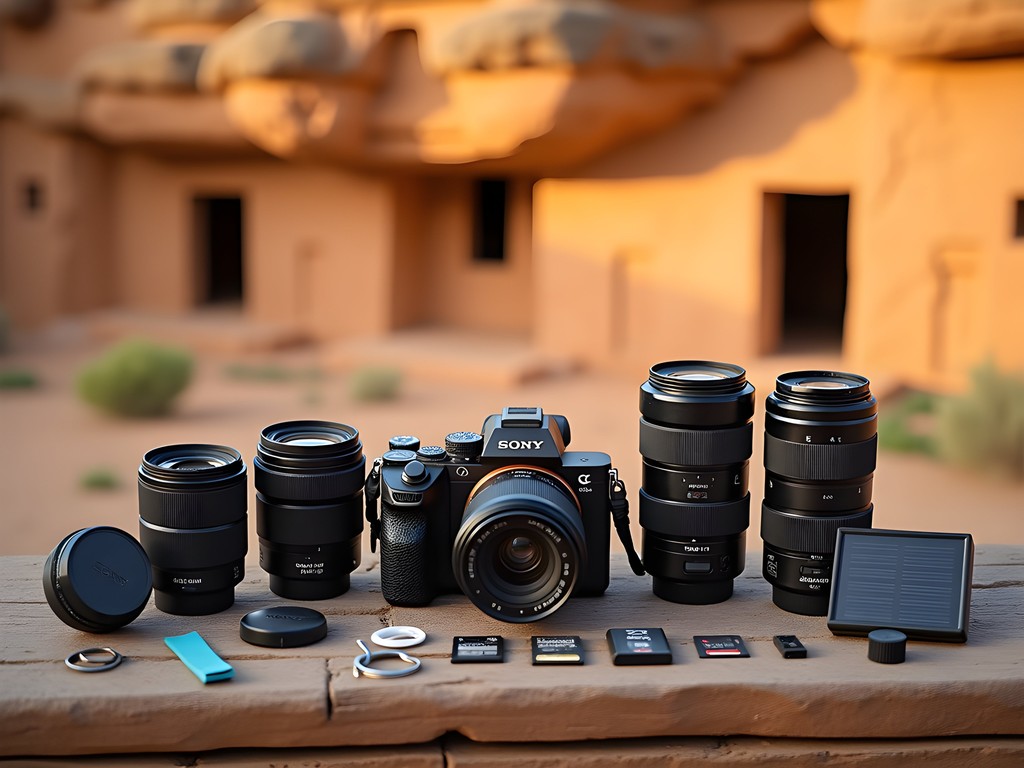
💡 Pro Tips
- Pack at least twice as many memory cards and batteries as you think you'll need
- A lightweight tripod is essential for church interiors – look for carbon fiber models under 1.5kg
- Bring lens cleaning supplies – the region can be dusty, especially during the dry season
Abuna Yemata Guh: The Sky Church Experience
Of all Tigray's remarkable churches, Abuna Yemata Guh remains etched in my memory like a vivid dream. Reaching it requires a heart-pounding climb up a near-vertical cliff face—with no safety equipment beyond the steady hands of local guides. As someone who codes for a living, this physical challenge was far outside my comfort zone, but às vezes precisamos sair da nossa zona de conforto para crescer (sometimes we need to leave our comfort zone to grow).
The 45-minute ascent culminates in a narrow ledge overlooking the Hawzien Plain—a breathtaking vista that alone justifies the climb. But the true reward awaits inside: 800-year-old Byzantine-style frescoes in remarkable condition, their colors still vibrant against the hand-hewn stone walls.
Photographically, Abuna Yemata presents unique challenges. The small entrance admits limited light, creating dramatic shadows across the ancient artwork. I found that bracketing exposures and later blending them preserved both the vivid details of the paintings and the atmospheric quality of the space.
The priests who maintain these churches are typically present and, with respectful interaction, often willing to be photographed. I offered prints of my photos from my previous day's visit to another church, which helped establish rapport. This cultural exchange—the giving of images rather than just taking them—opened doors throughout my journey.
When documenting the priests, my portrait lens proved invaluable, allowing me to capture intimate portraits with beautiful bokeh that isolated subjects against the textured stone walls. The lens's fast aperture meant I could work with available light rather than disrupting the sacred atmosphere with flash.
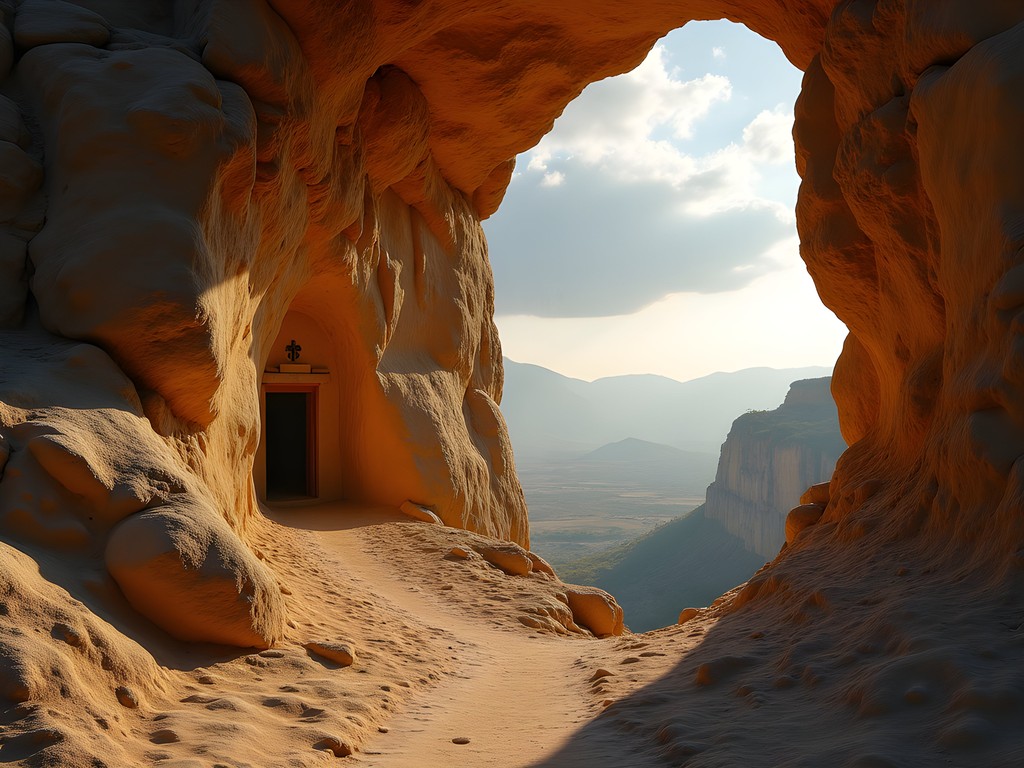
💡 Pro Tips
- Visit early morning (before 9am) for the best light and fewer visitors
- Bring small local currency denominations for church entrance fees and guide tips
- Learn basic Tigrinya greetings – they go a long way with priests and local guides
The Light and Shadow Dance of Maryam Korkor
If there's one church that exemplifies the photographer's eternal dance with light and shadow, it's Maryam Korkor. Situated atop the Gheralta mountain range, this church rewards the two-hour hike with architectural magnificence and some of the most dramatic lighting conditions I've encountered.
I arrived at the base before sunrise, guided by Haile, a local expert who has navigated these paths since childhood. "Bäkur tära yimäṭalu," he advised in Tigrinya—come early for the light. His wisdom proved invaluable as we reached the summit just as the first rays illuminated the eastern façade of the church, creating a golden glow against the red sandstone that lasted barely twenty minutes.
The church's cruciform layout, with its domed central sanctuary, creates fascinating light patterns throughout the day. I spent hours observing how sunbeams moved across the ancient stone, occasionally illuminating details of crosses carved into columns or briefly highlighting centuries-old murals.
For interior photography, I found myself constantly adjusting between technical precision and artistic interpretation. The variable ND filter in my kit proved essential for managing the extreme contrast between the bright doorways and the shadowy recesses.
Beyond the technical aspects, Maryam Korkor offers something more profound: a sense of timelessness that's difficult to convey in photographs. Standing in spaces carved by hand over 800 years ago, watching the same light patterns that generations of worshippers have observed, creates a connection across centuries that transcends the mere clicking of a shutter.
The experience reminded me of similar feelings I'd had photographing ancient temples in southern India with my father years ago—that peculiar sensation of being simultaneously insignificant in the grand timeline yet connected to something eternal through the act of witnessing and documenting.
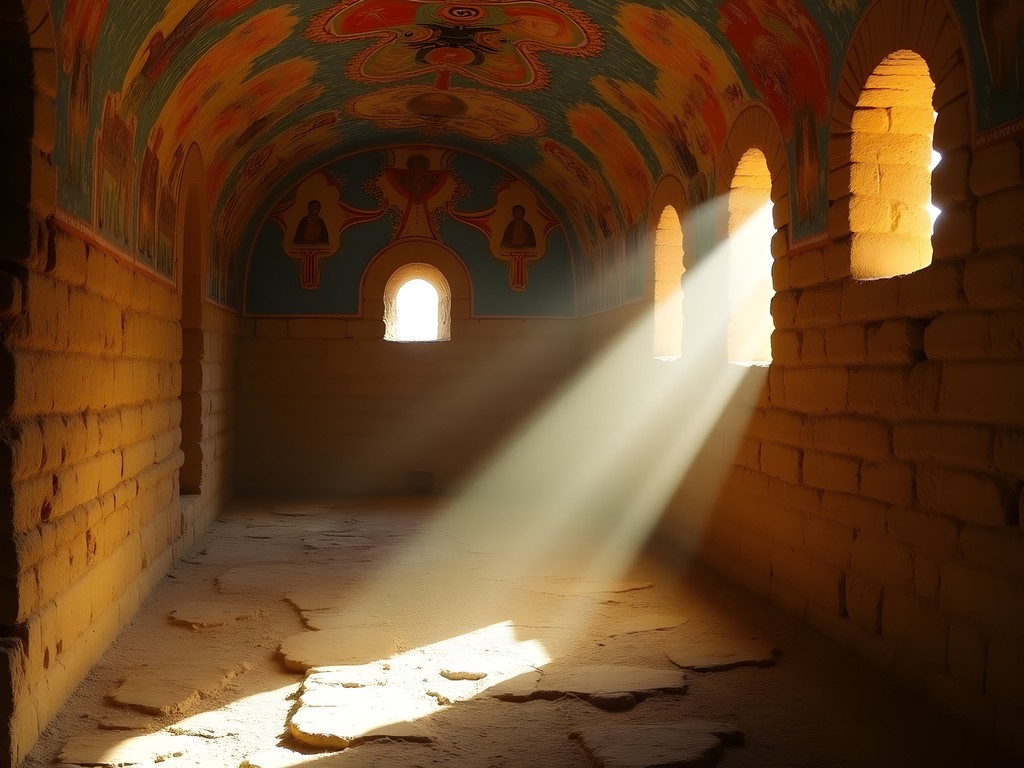
💡 Pro Tips
- The hike to Maryam Korkor is strenuous – build in acclimatization days if coming from lower elevations
- Bring a polarizing filter to manage glare on the sandstone exteriors
- Schedule at least 3-4 hours at the site to capture changing light conditions
Cultural Sensitivities and Photographic Ethics
Photographing sacred spaces requires more than technical skill—it demands cultural awareness and ethical consideration. Throughout my time in Tigray, I constantly navigated the balance between documentation and respect, between artistic expression and cultural preservation.
Many churches require removing shoes before entering, covering shoulders and knees, and paying modest entrance fees that help maintain these treasures. Some prohibit photography of certain religious artifacts or ceremonies. Rather than seeing these as restrictions, I viewed them as opportunities to engage more deeply with the cultural context of my subjects.
I found that my experiences in Japan—being a foreigner navigating cultural nuances—prepared me well for Tigray. The concept of kuuki wo yomu (reading the air) that I've embraced in Osaka served me equally well in Ethiopia's ancient churches. Often, the most powerful images came not from pushing boundaries but from patient observation and cultural respect.
Before photographing individuals, I always sought permission—first through gesture, then with the help of my guide translating more specific requests. Sharing my camera's LCD screen to show people their images often transformed initial hesitation into genuine connection.
One memorable encounter occurred with an elderly priest at Debre Maryam Korkor. After respectfully photographing him during a quiet moment of prayer, I showed him the images. His weathered face brightened as he pointed to my instant printer, which I'd brought specifically for such exchanges. The small print I offered became a bridge between worlds—his ancient tradition and my technological one—resulting in an invitation to photograph areas of the church typically closed to visitors.
These exchanges underscore a philosophy I've developed across three continents: the camera should be a tool for connection rather than separation, for giving rather than merely taking.
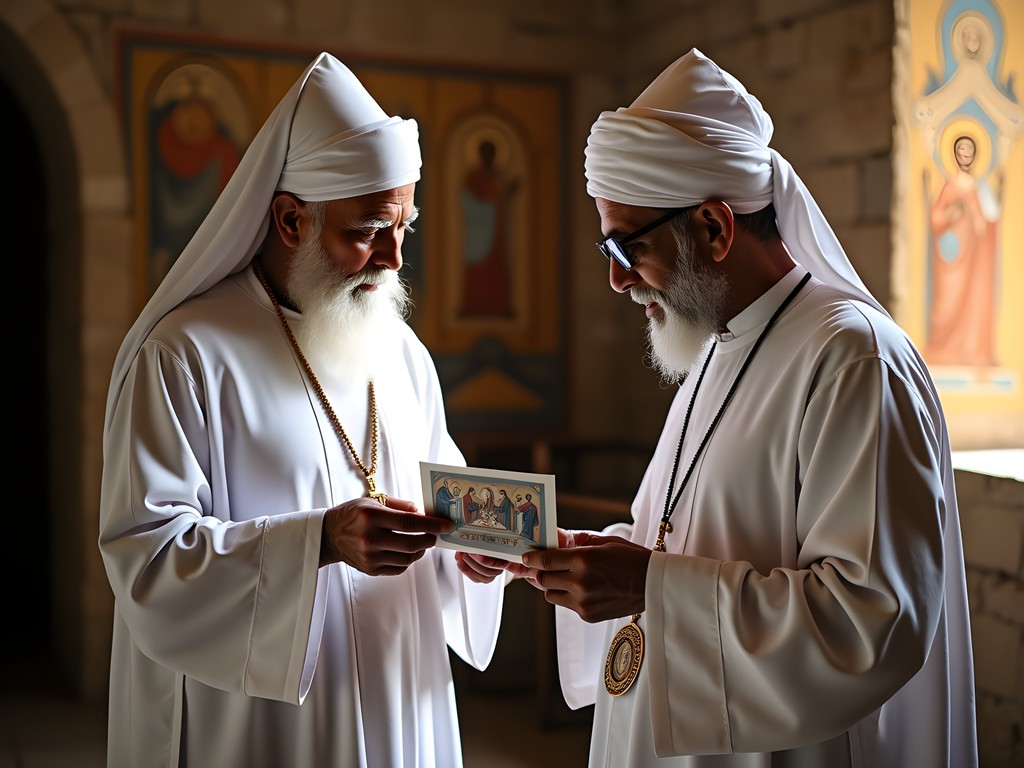
💡 Pro Tips
- Always ask permission before photographing people, especially during religious ceremonies
- Learn about prohibited photography subjects before visiting each church
- Consider bringing an instant printer to share images with subjects – it transforms the photographic relationship
Beyond Churches: Capturing Mekelle's Living Heritage
While Tigray's churches rightfully command attention, Mekelle itself offers rich photographic opportunities that contextualize these ancient sites within living culture. As a software engineer accustomed to systems thinking, I found myself drawn to documenting the connections between past and present, between sacred spaces and daily life.
Mekelle's markets provided vibrant counterpoints to the solemn church interiors. The Edaga Hamus Market (Thursday Market) explodes with color and activity—spice merchants arranging perfect pyramids of berbere and shiro, textile vendors displaying traditional Ethiopian fabrics in kaleidoscopic patterns. Here, I switched to street photography mode, using a discreet compact camera that attracted less attention than my larger gear.
The technical challenge shifted from managing low light to capturing fleeting moments amid constant movement. I found myself working with zone focusing techniques, pre-setting focus distances and exposures to react quickly to unfolding scenes.
Musically, Mekelle offered unexpected inspiration. One evening at a local azmari bet (traditional music house), I witnessed musicians playing the krar (Ethiopian lyre) and masenqo (single-stringed fiddle)—instruments virtually unchanged since the time the churches were carved. The rhythmic connections between this music and the architectural patterns I'd been photographing became a theme I pursued visually.
I spent an afternoon with a traditional instrument maker named Bereket, documenting his process of crafting a begena (Ethiopian harp) using techniques passed down through generations. The resulting photo essay became one of my most meaningful projects, connecting the artistic heritage of the churches with living cultural practices.
These experiences in Mekelle's contemporary spaces provided essential context for understanding the churches not as isolated historical artifacts but as part of a continuous cultural tradition. For photographers visiting Tigray, I strongly recommend balancing church visits with time in markets, music venues, and artisans' workshops to capture the full spectrum of this remarkable region.
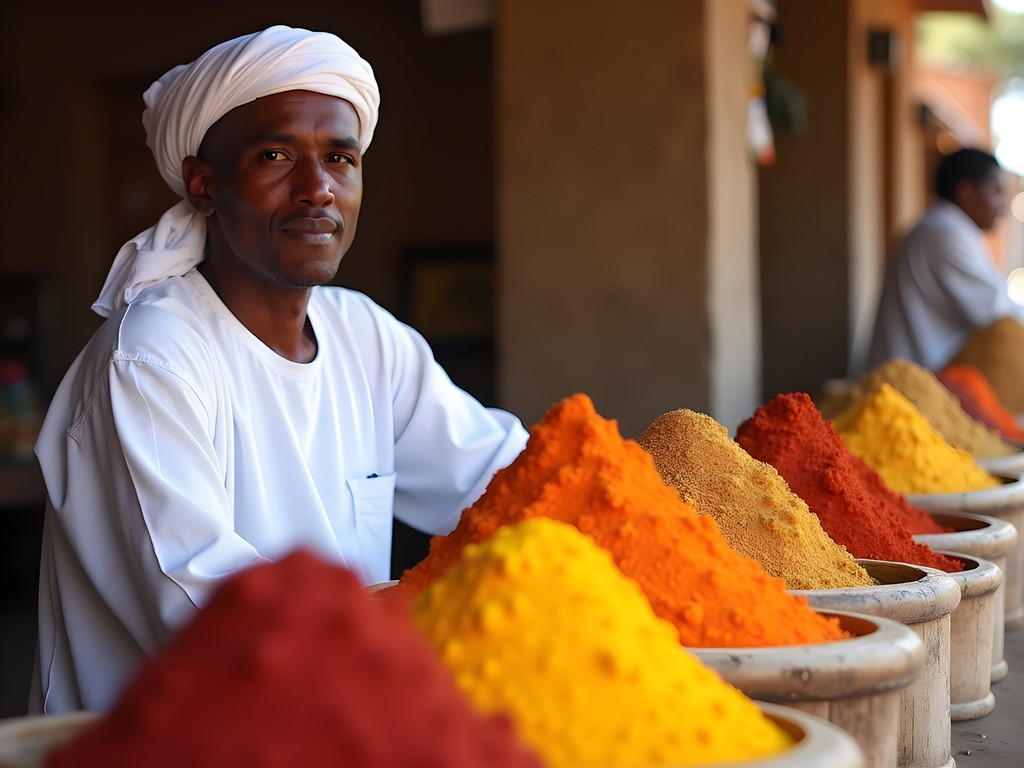
💡 Pro Tips
- Visit markets early for the best light and most activity
- Ask permission before photographing craftspeople at work – most appreciate interest in their skills
- Consider hiring a local music guide who can provide access to traditional performances
Final Thoughts
As my two weeks in Tigray drew to a close, I found myself transformed not just as a photographer but as a cultural observer. These ancient churches, defying gravity on their precarious perches, have survived centuries of conflict, climate challenges, and changing regimes—a testament to the enduring power of faith and human creativity. For photographers willing to venture beyond the well-trodden paths, Mekelle and its surrounding treasures offer unparalleled opportunities to capture the intersection of natural beauty, architectural wonder, and living tradition. The technical challenges—from vertiginous climbs to tricky lighting—only enhance the reward of images that few have captured. Like the craftsmen who carved these churches from solid rock, we photographers must approach Tigray with patience, respect, and a willingness to see beyond the obvious. Até a próxima aventura, meus amigos fotógrafos. Until the next adventure, my photographer friends.
✨ Key Takeaways
- Patience and cultural respect open more doors than aggressive photography
- Technical preparation is essential for Tigray's challenging photographic conditions
- The most compelling images connect ancient churches to living cultural traditions
📋 Practical Information
Best Time to Visit
October-November (fall) or January-March (dry season)
Budget Estimate
$50-100/day excluding international flights
Recommended Duration
Minimum 10 days, ideally 2 weeks
Difficulty Level
Moderate To Challenging Due To Hiking And Climbing Required
















Comments
Casey Andersson
Marco, your photos capture the ethereal quality of those rock-hewn churches so beautifully! I visited Tigray last year and was completely unprepared for how emotional the experience would be. The climb to Abuna Yemata Guh nearly gave me a heart attack (I'm terrified of heights!) but the frescoes inside were worth every moment of terror. I appreciate your section on cultural sensitivities - I found that bringing small prints of my previous travels to share with locals created wonderful connections. Did you find the priests open to being photographed? Some were quite shy when I visited.
Marco Sharma
That climb is something else, isn't it? Great tip about bringing prints to share! Regarding the priests, it varied widely. I always asked permission first and showed them the images afterward. Some were very interested in photography, while others preferred to remain more private. Building rapport before asking to photograph them made all the difference.
Casey Andersson
Absolutely! Taking time to build that connection first is key. Did you have a favorite church among all the ones you visited?
Marco Sharma
Maryam Korkor stole my heart. Something about the quality of light there in late afternoon was absolutely magical. But honestly, each church had its own unique character and photographic opportunities.
mountainchamp
Those church photos are incredible! What camera setup did you use for the low light inside the churches? I'm planning a trip there next spring and wondering what gear to bring.
Marco Sharma
Thanks mountainchamp! I mainly used my Sony A7iii with the 24-70mm f/2.8 for versatility. Inside the churches, a fast lens and tripod are essential - though remember some churches restrict tripod use, so also practice your steady hands technique!
mountainchamp
Thanks Marco! Really helpful. Did you have any issues with the dust affecting your gear?
Marco Sharma
Definitely! The dust is relentless. Bring plenty of cleaning supplies and a good camera bag. I used weather-sealed bag which was perfect for the conditions. Also, change lenses as little as possible when outdoors.
Douglas Bradley
Marco, this is exactly the kind of cultural immersion photography I aspire to. I'm planning a Tigray expedition for next spring and your logistics breakdown is incredibly helpful. The section on the light conditions at different times of day is gold. I'm curious about your transportation between the churches - did you hire a driver for the entire two weeks or arrange day trips from Mekelle? Also, how did you handle the language barrier when communicating with the priests about photography permissions?
Marco Sharma
Thanks Douglas! I hired a local guide/driver for the full two weeks - absolutely essential for finding the more remote churches and navigating permissions. He spoke excellent English and the local language, so he handled all translations with priests. If you're planning a trip, I'd recommend at least 10 days to avoid rushing between sites. The distances aren't huge but the roads can be challenging.
Douglas Bradley
Great insight, thanks! Would you be willing to share your guide's contact info? I'm planning to spend two full weeks there to have enough time for both photography and cultural experiences.
Marco Sharma
Just sent you a DM with his details. He's fantastic and knows all the best times for light at each location. Book him early though - he's in high demand!
oceanlover
This thread is so helpful! I'm returning to Ethiopia next year and definitely want to spend more time in Tigray. The lighting conditions were my biggest challenge last time.
oceanlover
I visited Tigray last year but my photos don't look nearly as good as yours! The part about cultural sensitivities is so important - I almost made the mistake of photographing inside Maryam Korkor during a service. Thankfully our guide stopped me. Did you find the priests were generally okay with photography of the church interiors outside of services?
Marco Sharma
Yes, most priests were welcoming about photography outside of services as long as I made a small donation to the church and showed respect. I always asked first and showed them some photos after. Building that trust makes a huge difference!
redguy
Wow! Those shots of Abuna Yemata Guh are absolutely incredible! How did you manage to get that lighting with the cliff face in the background?
Marco Sharma
Thanks! I actually waited until about 4pm when the sun hits the cliff at an angle. Used a polarizing filter to cut the haze and bring out those rock textures. The climb up was terrifying but worth it!
redguy
That climb looks insane in your photos! Did you bring all your gear up that cliff face?
Marco Sharma
I kept it minimal - just my camera backpack with one body and two lenses. The locals who guided me were carrying gear like it was nothing while I was clinging to the rock for dear life!
photomaster
Heading to Ethiopia next month and Tigray is high on my list. How did you handle the long hikes to these churches with all your camera gear? Any specific lens recommendations for those tight interior spaces?
Marco Sharma
I packed pretty light - just my main body and three essential lenses. A wide angle (16-35mm) was absolutely crucial for those tight church interiors. For the hikes, I used a comfortable camera backpack with good weight distribution. The climb to Abuna Yemata Guh requires free hands in some sections, so make sure your gear is secure!
photoqueen
Jumping in to say definitely bring a wide angle! And don't forget extra batteries - charging options are limited in some areas.
photomaster
Thanks both! Super helpful. Can't wait to experience these incredible places for myself.
Nicole Russell
Marco, your post brought back so many memories of my solo trip to Tigray in 2021! The way you captured the light filtering through those ancient windows at Maryam Korkor is exactly how I remember it. I struggled so much with my camera settings in those dark interiors. For anyone planning to visit, I highly recommend bringing a tripod as many churches don't allow flash photography (for good reason - those 800-year-old paintings!). Did you find the local guides knowledgeable about the best times for photography? I feel like timing was everything there.
Marco Sharma
Thanks Nicole! Absolutely about the guides - mine was actually an amateur photographer himself and knew exactly when each church had the best light. Early morning at Abuna Yemata was magical, though I nearly froze waiting for that perfect moment!
photoqueen
I visited Tigray last year and was blown away by these churches. The climb to Abuna Yemata Guh nearly gave me a heart attack (seriously, that cliff face!), but the frescoes inside were worth every terrifying step. Marco, did you have any issues with the local priests about photography permissions? I found some were welcoming while others were quite strict about where I could point my camera.
Marco Sharma
Thanks for reading, photoqueen! Yes, permissions were definitely a mixed bag. I always carried small donations and made sure to ask before shooting anything inside. Having a local guide who knew the priests personally made a huge difference. Some churches were completely off-limits for interior photography, which I totally respected.
photoqueen
That makes sense! My guide was amazing too. Definitely couldn't have navigated those cultural nuances without him.
happyzone
These photos are absolutely stunning! The light in that Sky Church shot is unreal.
globestar
WOW!!! Those colors in the frescoes are UNREAL! How have I never heard of these churches before?? Your photos are absolutely stunning!!! 😍😍😍
Venture X
Premium card with 2X miles, $300 travel credit, Priority Pass